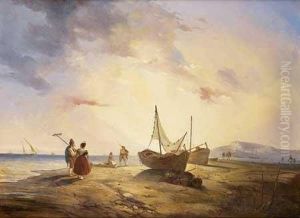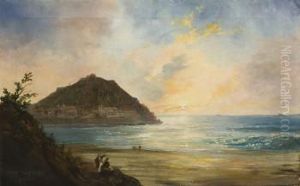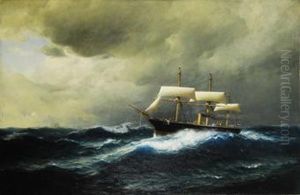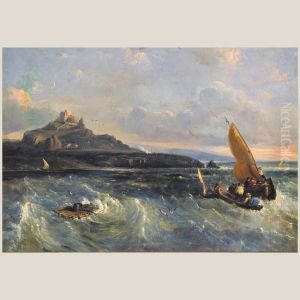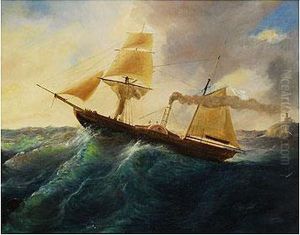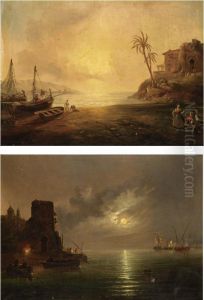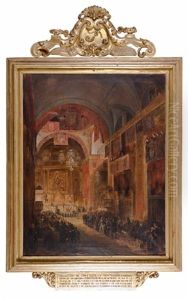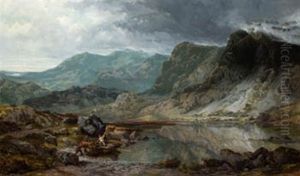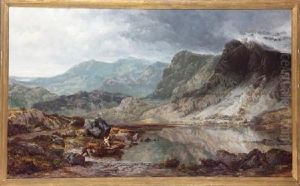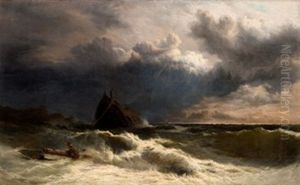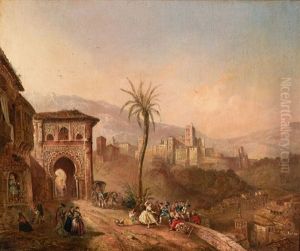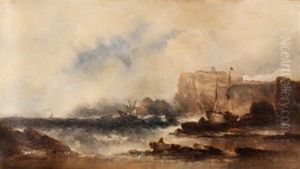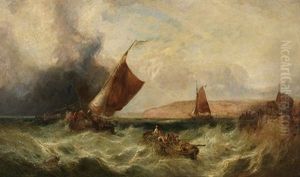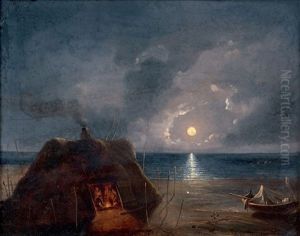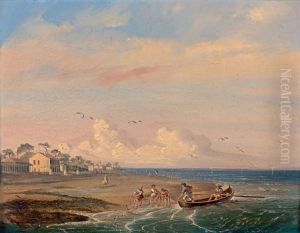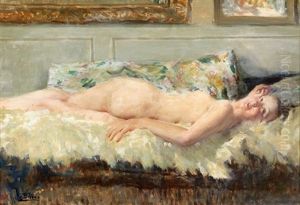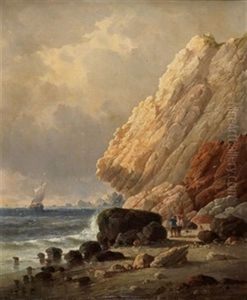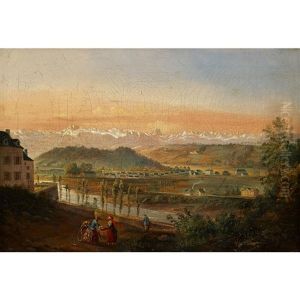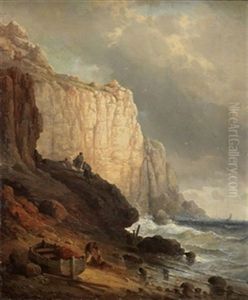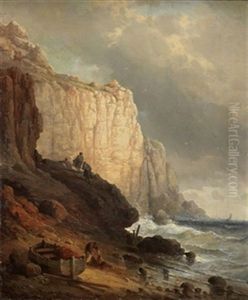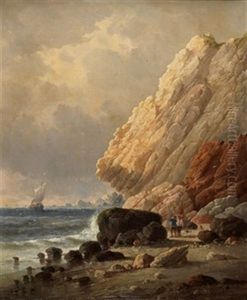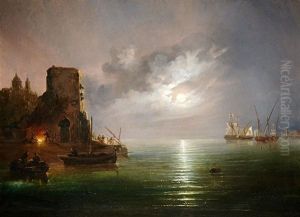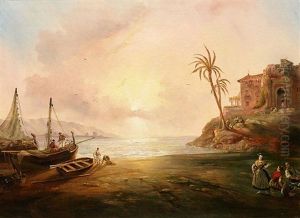Antonio De Brugada Vila Paintings
Antonio de Brugada Vila was a notable Spanish painter, born in the year 1804 in Madrid, Spain. His life and career spanned a significant period of the 19th century, a time of political upheaval and cultural transformation in Spain and across Europe. Brugada is primarily remembered for his contributions to the Romantic movement, a period that emphasized intense emotion as an authentic source of aesthetic experience, countering the rationalism of the Enlightenment.
Brugada's early life was marked by his exposure to the burgeoning artistic environment of Madrid, where he was able to study and work alongside some of the leading artists of his time. Despite the lack of detailed records about his early training, it is known that he was influenced by the Romantic landscapes and seascapes of contemporary artists, which would later become a hallmark of his own work. His style evolved over time, showcasing a keen eye for the dramatic interplay of light and shadow, and a preference for scenes that evoke a sense of melancholy and sublime beauty.
Throughout his career, Antonio de Brugada Vila was deeply engaged with the cultural and political issues of his time. He lived through the Peninsular War and the liberal revolutions of the 1820s, events that shaped his worldview and, by extension, his art. His paintings often reflect a preoccupation with themes of heroism, freedom, and national identity, resonating with the Romantic fascination with individual struggle and the natural world.
One of Brugada's most significant contributions to art was his role in preserving and promoting Spanish cultural heritage, particularly in the wake of the Peninsular War. He was involved in the recovery and documentation of Spain's artistic treasures, many of which had been looted or damaged during the conflict. His dedication to this cause earned him recognition and respect among his contemporaries.
Antonio de Brugada Vila's death in 1863 marked the end of a life devoted to the pursuit of artistic excellence and cultural preservation. His legacy, though not as widely recognized as that of some of his contemporaries, remains an important part of the history of Spanish art. His works continue to be studied and admired for their emotional depth, technical skill, and profound engagement with the spirit of their time.
